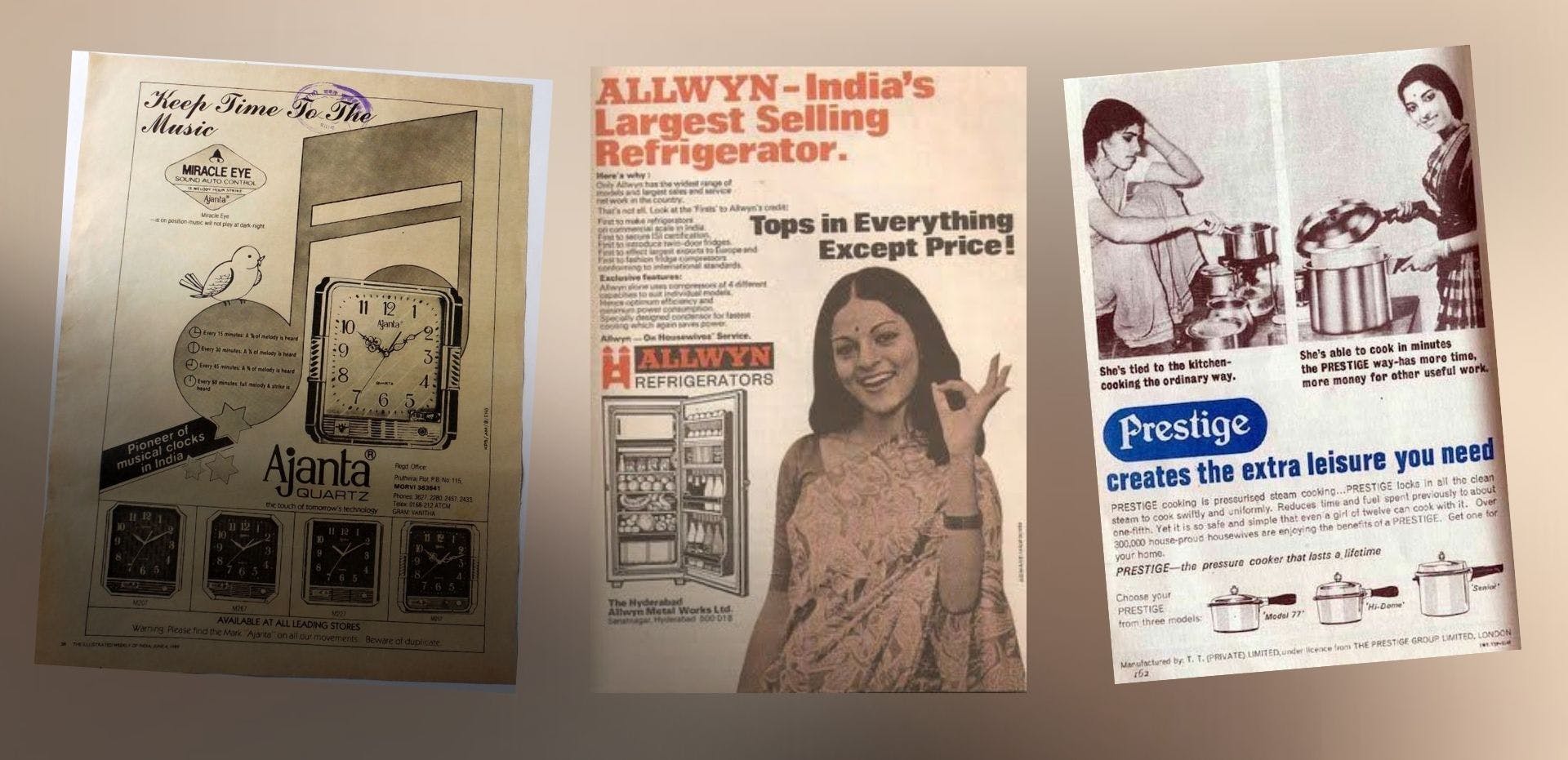Kuch Thanda Loge? The Gadgets that Changed our Homes
BOOKMARK
Streaming platforms and smart phones make it almost impossible to imagine, but there was a time when the entire family (and maybe even a few neighbours and close friends) would gather around a television set in the living room. And the star of the evening was not the TV set but a ‘VHS player’ that was plugged into the television set. It was an invention that allowed you to watch your favourite shows, at your convenience, in the comfort of your home.
When the advertisements began to play, family elders rushed to the kitchen to bring out refreshment for everyone, sometimes fizzy drinks made with the help of a home soda machine. If the commercial break was not long enough, the host would hit the ‘pause’ button as the refreshments made their way around the room, before all eyes were trained on the TV again.
In the late ‘80s and early ‘90s, watching home movies was a family or community event. Only a few households boasted a brand-new colour TV; the others were still back-and-white but even these were a luxury.
These were times when the middle-class was finally able to afford a luxury or two as the economy began to grow, moving beyond the margins of nationalisation and socialism. Consumers were eagerly embracing home-grown brands that were now flooding the domestic market, and Doordarshan brought to every living room one’s favourite stars and latest tunes from Bollywood.
Ringing in the New
The television was the best way to communicate with the masses. From the latest news to employment possibilities and even updates on agriculture, everything had a place on TV. With the coming of easily available and recordable video and audio cassettes, everyone wanted to own an audio or video recorder, to make mixed tapes and video compilations. The portable audio player was replacing the hand-held transistor and the world of personal entertainment was changing.
Home-makers too were benefitting from new technology. New comforts started to make an appearance and things were becoming more and more convenient. Telephones were suddenly available, and if you had the patience to stick it out on the waitlist, you could have a private connection in your home!
Often, there would be just one telephone connection in an entire neighbourhood and it would be used as a ‘contact number’ for the entire community. From an era where possessing a landline connection was a luxury and often served as proof of residence, we now live in times where most people don’t opt for a telephone connection as the individual cellular phone has become the device of choice.
Cold Comfort
Refrigerators found a proud place in a household and were often positioned in the living room as a status symbol. Initially introduced as a heavy piece of machinery (they looked almost like space craft!), the refrigerator underwent an aesthetic transformation over time.
The shape and design became sleeker and the coil eventually disappeared from the back. The invention of frost-free technology ended the cumbersome ritual of defrosting and cleaning. The improved design and better products changed the way an average household lived.
Innovations in mixer-grinder designs meant spending far less time in the kitchen. Since these products had been designed keeping Indian cuisine in mind, they were a great help to a homemaker. Grinding masalas and making chutney now took only minutes and needed no elbow grease. Juicers allowed the common man to consume freshly squeezed juice in their own homes. As a price-sensitive people, this proved a sensible investment for the middle class.
Local Indian brands were making headway in cookware as well. Pretty actresses in TV commercials promised that one could halve cooking time if a pressure cooker was used, and the brands were true to their promise.
Lightbulb Moments
Although the big metros were privileged to get electricity supply from the late 19th century, others experienced its benefits much later. A regular household in urban India could finally boast of electric meters only as recently as the late 20th century.
Catchy advertisement jingles promised quality and durable lightbulbs and tubelights; the electric fan was not far behind. And there was so much variety! A country as vast as India had varied requirements based on climate. Hot summers demanded cooling, a need fulfilled by giant ‘desert coolers’ in the 1960s. Only a few could afford this luxury as they were expensive and difficult to get.
Coolers for the regular household made an appearance only in the late 1970s, and these too were a rare commodity. Owning an electric appliance meant not just forking out money for the item itself but for the electricity to run it. People were price-sensitive about the appliance and more so about their electricity bills. Air-conditioners were a thing of complete luxury. And the rare household that owned one would see the entire family sleeping in the same room when they occasionally switched it on!
Over the years, our daily lives have become more and more convenient due to the introduction of household appliances. Washing machines, vacuum cleaners and hair dryers have made household chores a breeze.
We all have memories of the first television set in our neighbourhood, the first vacuum cleaner we’d seen or even the only home soda-maker in the extended family. These objects of everyday use together form a part of the #HeritageInOurHomes. Immerse yourself in some delightful nostalgia with this series and don’t forget to take part in our Quiz!










